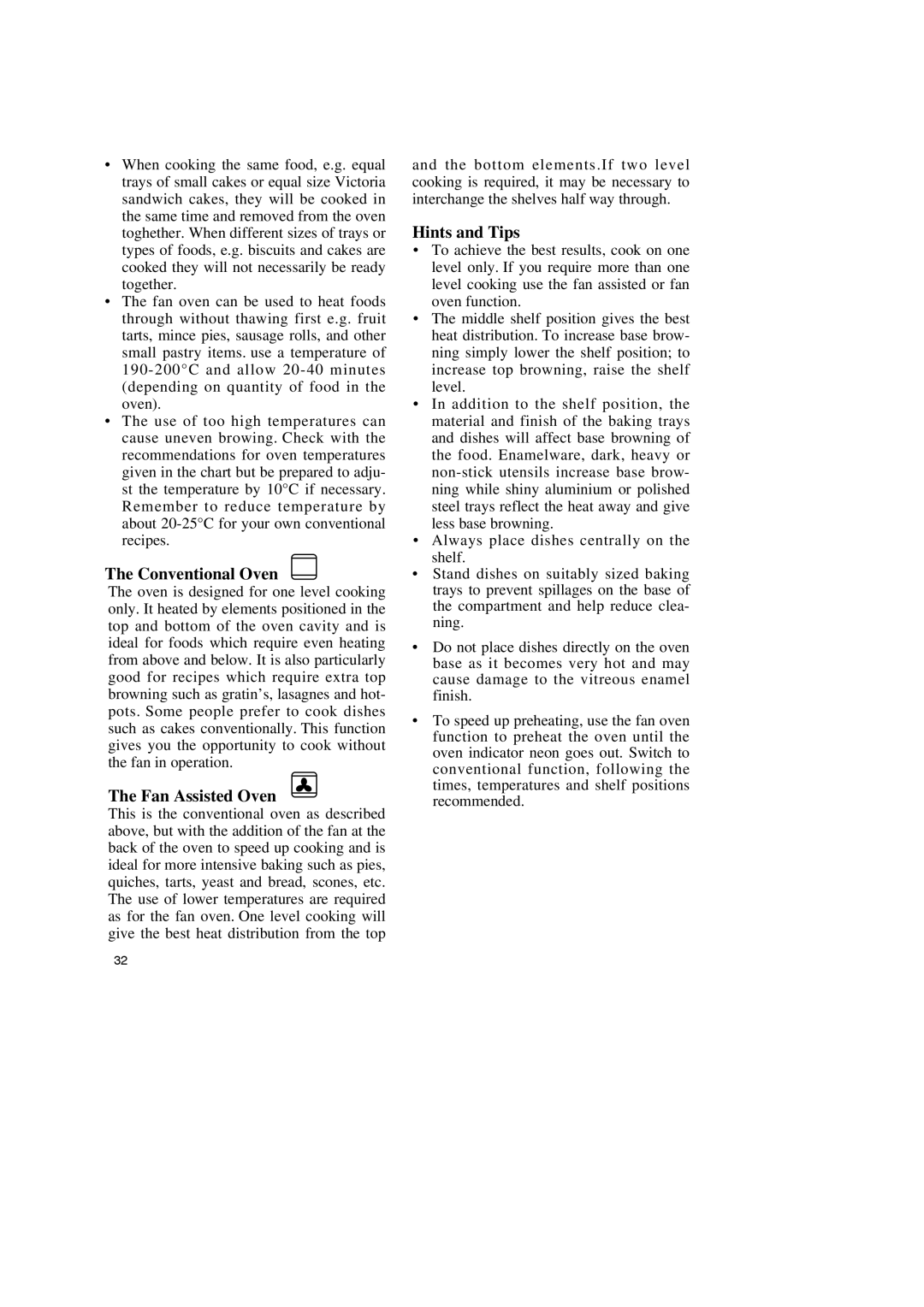
•When cooking the same food, e.g. equal trays of small cakes or equal size Victoria sandwich cakes, they will be cooked in the same time and removed from the oven toghether. When different sizes of trays or types of foods, e.g. biscuits and cakes are cooked they will not necessarily be ready together.
•The fan oven can be used to heat foods through without thawing first e.g. fruit tarts, mince pies, sausage rolls, and other small pastry items. use a temperature of
•The use of too high temperatures can cause uneven browing. Check with the recommendations for oven temperatures given in the chart but be prepared to adju- st the temperature by 10°C if necessary. Remember to reduce temperature by about
The Conventional Oven
The oven is designed for one level cooking only. It heated by elements positioned in the top and bottom of the oven cavity and is ideal for foods which require even heating from above and below. It is also particularly good for recipes which require extra top browning such as gratin’s, lasagnes and hot- pots. Some people prefer to cook dishes such as cakes conventionally. This function gives you the opportunity to cook without the fan in operation.
The Fan Assisted Oven
This is the conventional oven as described above, but with the addition of the fan at the back of the oven to speed up cooking and is ideal for more intensive baking such as pies, quiches, tarts, yeast and bread, scones, etc. The use of lower temperatures are required as for the fan oven. One level cooking will give the best heat distribution from the top
and the bottom elements.If two level cooking is required, it may be necessary to interchange the shelves half way through.
Hints and Tips
•To achieve the best results, cook on one level only. If you require more than one level cooking use the fan assisted or fan oven function.
•The middle shelf position gives the best heat distribution. To increase base brow- ning simply lower the shelf position; to increase top browning, raise the shelf level.
•In addition to the shelf position, the material and finish of the baking trays and dishes will affect base browning of the food. Enamelware, dark, heavy or
•Always place dishes centrally on the shelf.
•Stand dishes on suitably sized baking trays to prevent spillages on the base of the compartment and help reduce clea- ning.
•Do not place dishes directly on the oven base as it becomes very hot and may cause damage to the vitreous enamel finish.
•To speed up preheating, use the fan oven function to preheat the oven until the oven indicator neon goes out. Switch to conventional function, following the times, temperatures and shelf positions recommended.
32
